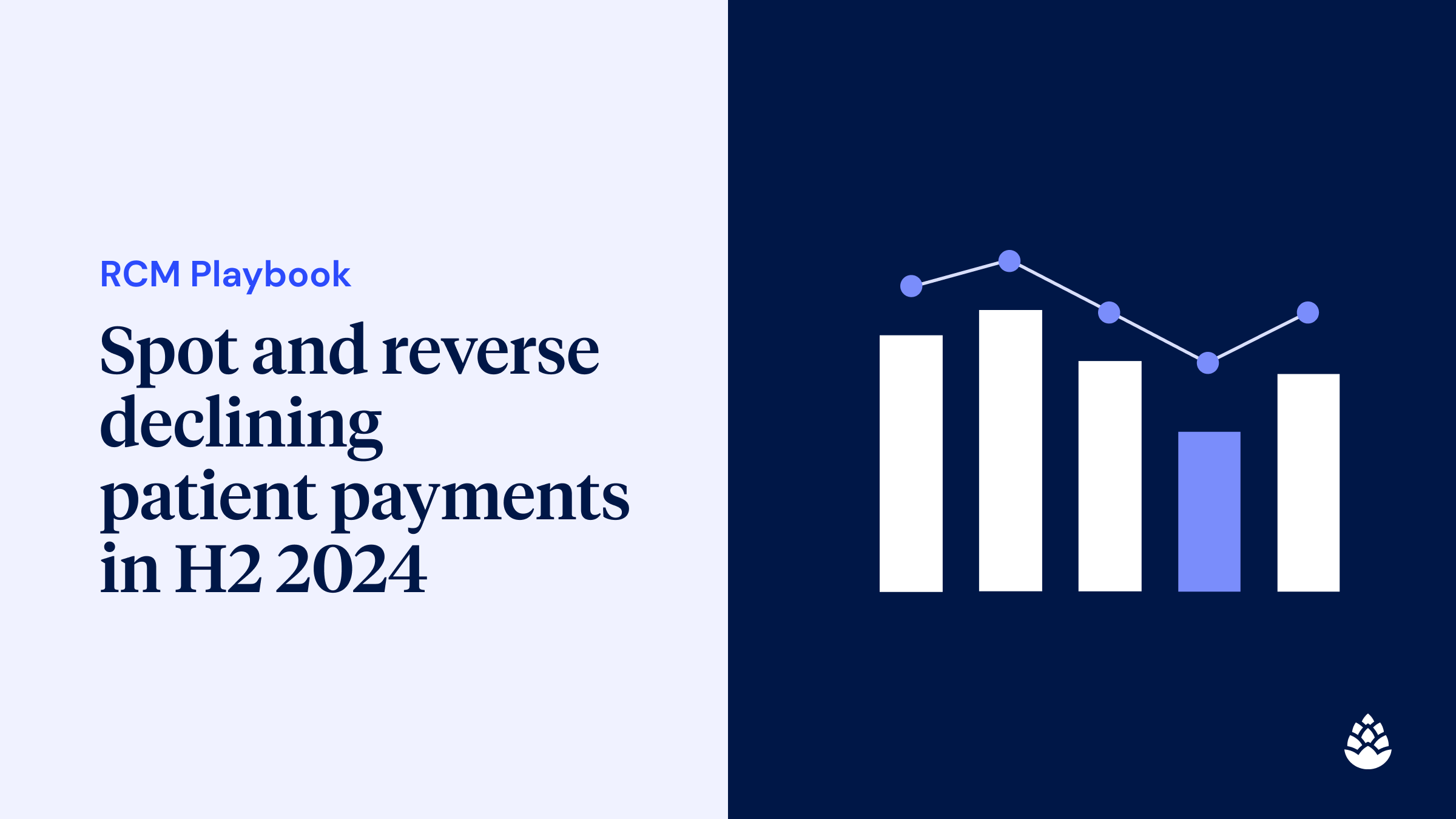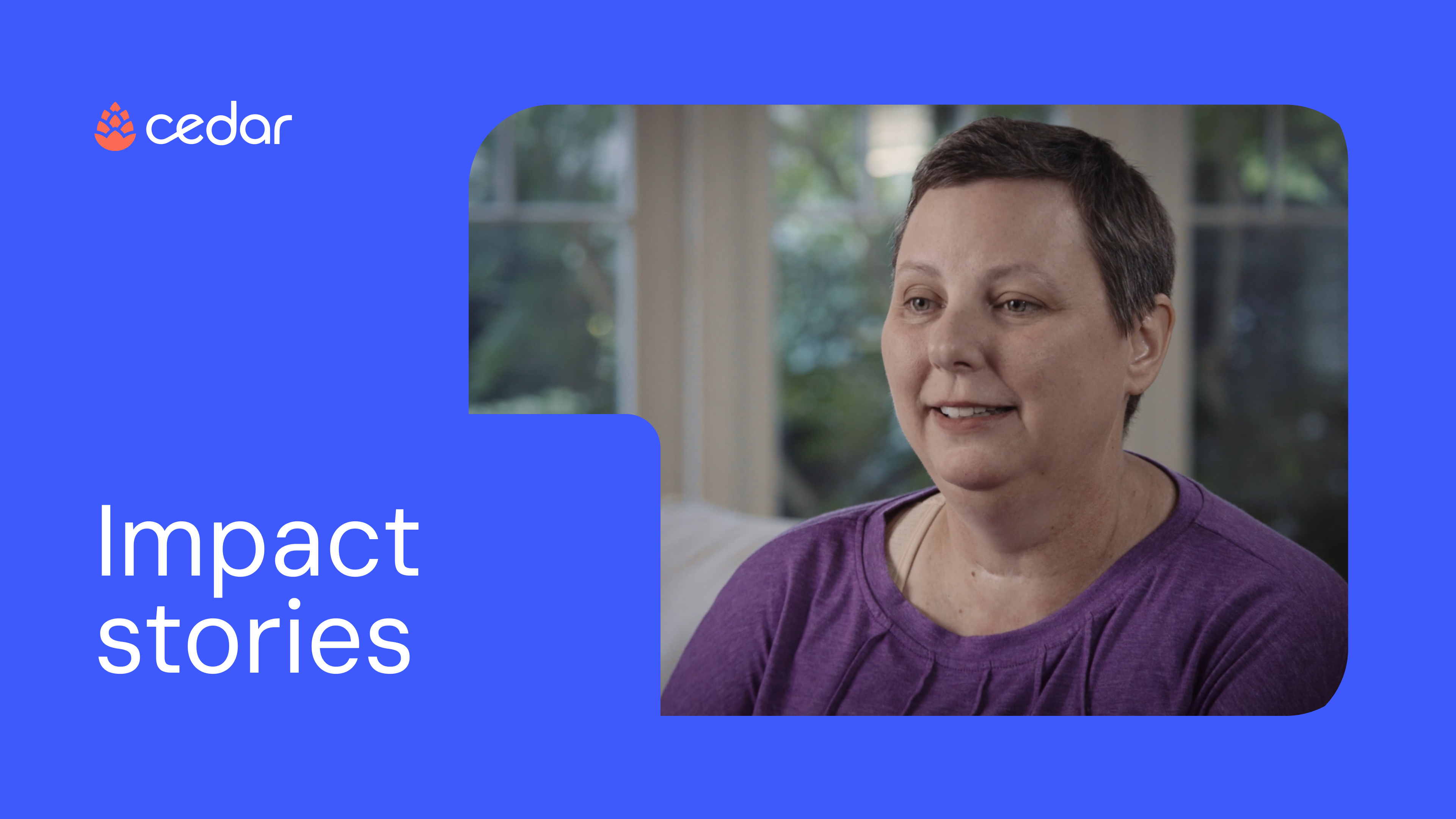Have a sneaking suspicion that patient payments are about to decline?
You’re not alone. Seasonal trends show that patient payments tend to peak in the first half of the year, then taper off as patients meet their deductibles and the share of true self-pay accounts rise.* These factors, among others, can impact provider collection rates.
But don’t panic. We’ve compiled a list of early signals of declining performance we monitor closely with clients—and proven strategies to reverse the trend.
Signal #1: Historical performance
Start by comparing year-over-year billing and payment data for the same period to gauge performance. For example, if billings are lower this month, expect payments to decrease in the next one to two months. If payments are down for several consecutive months while billings remain stable, it may indicate broader affordability issues.
Pro tip: Focus on the amount first billed to patients for immediate comparison.
Signal #2: True self-pay billings
An increase in the share of true self-pay accounts typically hurts collection rates because a higher proportion of patients are burdened with larger bills. Beyond patients hitting their deductibles, this can be driven by legislative changes that result in a wave of Medicaid redeterminations, going out of network with a payer, or acquiring an organization with a different payer mix.
Opportunity
Simplify access to financial assistance
Rather than overreacting to an increase in true self-pay charges, we encourage providers to explore proactive solutions to help patients find coverage. With more than half of patients (55%) struggling to navigate financial assistance on their own, there’s room for improvement.
Connecting patients to government insurance, insurance marketplaces, or medication assistance can significantly reduce or even eliminate out-of-pocket costs for patients while increasing reimbursement. Instead of solely relying on financial counselors, streamline financial assistance with online tools like eligibility calculators and dynamic forms. Integrating these workflows into the billing and payment process can boost awareness and empower patients to get the support they need.
Signal #3: Collection rate momentum
At Cedar, we’ve found that comparing the velocity of collections for different monthly or quarterly cohorts is helpful in forecasting long-term collection rates. Notably, the initial 60 days following the bill date are crucial, as this is when patients are most engaged. If collections at the 60-day mark are trending lower, it may signal declining performance in the coming months or quarters.
Pro tip: Exclude very large bills from your analysis to avoid skewed data.
Signal #4: Days to bill
We’ve observed an inverse relationship between collection rates and the time between the visit date and the billing date (i.e., collections rates rise if you can reduce the time period between the patient’s visit and when you send the bill). This makes sense, as a patient’s circumstances can change over a short period. They might set aside a portion of their budget for healthcare bills, but as new bills arise, those expenses take priority. Tracking billing delays, whether they’re caused by held claims, denials, or charging backlog(s), can give you a sense of where things are going.
Signal #5: Payment plan performance
If you anticipate shifting economic conditions, taking a close look at your payment plans can provide insights into expected cash. For example, you can see what bills are enrolled in plans, when they started, and how long they were set to last.
We also recommend assessing payment plan recovery using a more reliable metric than simply tracking default rates (% of plans that are canceled). The reason: patients sometimes start and cancel plans quickly, or cancel a plan and then pay in full. That’s why we developed a recovery index, which evaluates expected and actual installments each month. This bypasses the need to wait for all plans to mature.
Opportunity
Fine tune your payment plans
If you’re noticing a decline in payment plan recovery, it might be time to revisit your organization’s financial policies and guardrails. For example, are you offering the right payment plan durations to the right patients so they can affordably make payments?
Additionally, managing payment plans over time is often a high-friction process requiring staff intervention. By empowering patients to modify their plan terms online within your guardrails, you can help them stay on track as budgets change, reducing the risk of default.
Signal #6: Service mix
Similar to true self-pay billings, an uptick in emergency department visits can be a red flag. Patients who utilize emergency care are often uninsured, leading to higher balances and causing them to forgo routine and preventative care, as well as treatment for major health conditions and chronic diseases. What’s more, this pattern can result in bigger bills later on as these individuals require more expensive healthcare services, affecting collection rates.
Opportunity
Personalize every discount
True self-pay discounts are known to encourage prompt payment, but did you know that they can also boost collection rates? That’s possible when you tailor discount offers to the right patients and leverage the power of machine learning.
Skeptical? Our data shows a 10% lift in collection rate among true self-pay patients when personalized discounts are offered, compared to no discount. This approach helps our clients fulfill their missions to serve the most vulnerable patients while improving their financial performance.
Signal #7: Economic conditions
Although your own data can provide powerful insights, don’t overlook economic trends. For example, in 2022, rising interest rates and lagging wages reduced consumers’ purchasing power, causing some to deprioritize medical bills and their care. It’s important to monitor regional inflation and wage data, recognizing that while food or fuel price hikes are immediate, the effects of increased rates or rental costs may take time to ripple through the population.
The bottom line
Resolving patient balances has become mission-critical for providers, not just for financial stability but also for improving access to care. This is especially true during economic downturns when patients struggle to pay bills.
Remember, having a detailed understanding of your data is key to taking the right proactive steps. With the right partners and tools, you can empower your organization to navigate changing payment patterns with confidence.
Ready to take a deeper dive into your patient financial performance? Get a custom analysis for your organization, including benchmarking, at no cost.
* Unlike health systems and physician groups, physician staffing groups tend to have an even distribution of patient payments throughout the year.
Yohann Smadja is Vice President, Data Science at Cedar



